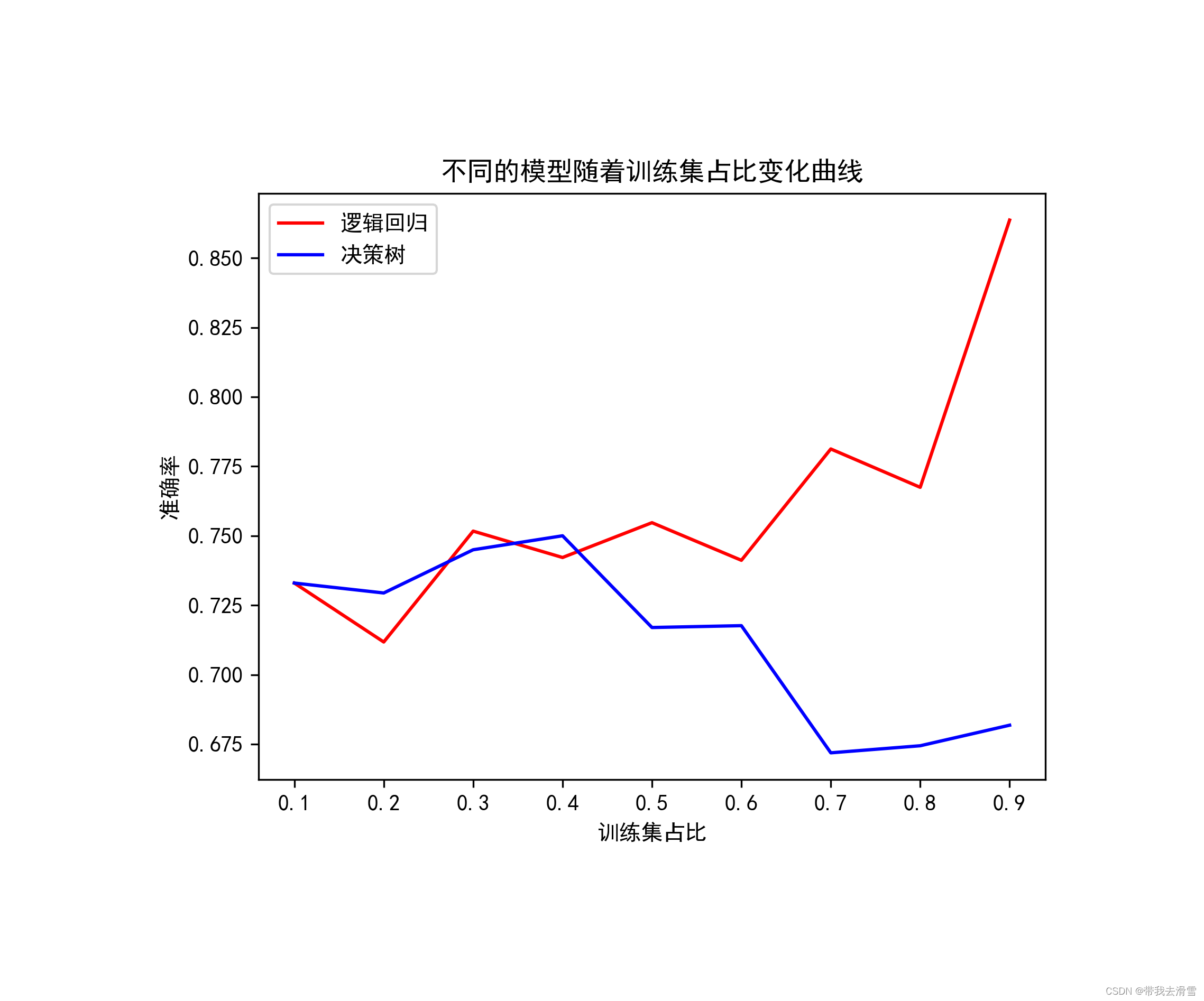大家好,我是带我去滑雪!
地质灾害的预测对于人们的生命财产安全、社会稳定和经济发展具有重要意义。地质灾害如地震、泥石流、山体滑坡等往往会造成严重的人员伤亡和财产损失。大规模的地质灾害往往会导致社会秩序混乱、人员流动、灾民避难等问题,影响社会的稳定和治安。地质灾害预测可以帮助人们避免在高风险地区建设,合理规划城市和土地利用,避免浪费资源并保护生态环境。
基于逻辑回归与决策树的地质灾害预测是一种常见的预测模型,结合了两种不同的机器学习算法,可以有效地预测地质灾害的发生概率和可能的影响因素。逻辑回归是一种用于解决分类问题的线性模型。它通过将特征的线性组合与Sigmoid函数结合来进行分类预测。在地质灾害预测中,逻辑回归可以用来分析不同地质因素(如地形、地质构造、降水等)对灾害发生的影响,并建立模型预测地质灾害的发生概率。例如,可以利用历史地质灾害数据和相关地质因素,训练逻辑回归模型来预测未来某地区发生地质灾害的可能性。决策树是一种基于树结构的分类和回归模型。它通过对数据集进行递归地划分,选择最优的特征来进行预测。在地质灾害预测中,决策树可以用来识别不同地质条件下地质灾害的可能性,并提供可解释的规则和决策路径。例如,可以利用决策树模型根据地质构造、地下水情况、地表覆盖等因素来评估地质灾害的潜在风险,并指导相关的防灾减灾工作。
将逻辑回归与决策树结合在地质灾害预测中,可以综合利用它们各自的优势,提高预测的准确性和可解释性。例如,可以先使用逻辑回归分析地质因素的影响,然后利用决策树根据这些因素建立预测模型,并生成可解释的规则和决策路径,从而为地质灾害的预防和应对提供科学依据和决策支持。下面开始代码实战。
目录
(1)导入相关模块和库
(2)导入数据
(3)划分训练集和测试集并进行标准化
(3)构建决策树模型和逻辑回归模型
(1)导入相关模块和库
import numpy as np
import pandas as pd
import matplotlib.pyplot as plt
import seaborn as sns
from sklearn import preprocessing
from sklearn.preprocessing import StandardScaler
from sklearn.model_selection import KFold,StratifiedKFold
from sklearn.model_selection import GridSearchCV
from sklearn.svm import LinearSVR
from sklearn.svm import SVR
from sklearn.ensemble import RandomForestRegressor
from sklearn.model_selection import train_test_split
from sklearn.metrics import mean_squared_error
from sklearn.metrics import mean_absolute_error
from sklearn.metrics import r2_score
get_ipython().run_line_magic('matplotlib', 'inline')
plt.rcParams['font.sans-serif'] = ['SimHei']
plt.rcParams['axes.unicode_minus'] = False
from IPython.core.interactiveshell import InteractiveShell
InteractiveShell.ast_node_interactivity = 'all'
import warnings
import seaborn as sns
import datetime
%matplotlib inline
plt.rcParams['font.sans-serif'] = ['KaiTi']
plt.rcParams['axes.unicode_minus'] = False (2)导入数据
data = pd.read_csv(r'E:\工作\硕士\博客\博客粉丝问题\data.csv',encoding="utf-8")
print(data)
data.info()#查看数据输出结果:
geologic structure human activity underground water susceptibility 0 0 1 1 1 1 0 1 1 1 2 0 1 1 1 3 0 0 1 1 4 0 1 1 1 .. ... ... ... ... 207 1 1 1 1 208 1 1 0 1 209 1 1 1 1 210 0 1 0 1 211 1 1 1 1[212 rows x 4 columns] <class 'pandas.core.frame.DataFrame'> RangeIndex: 212 entries, 0 to 211 Data columns (total 4 columns):# Column Non-Null Count Dtype --- ------ -------------- -----0 geologic structure 212 non-null int641 human activity 212 non-null int642 underground water 212 non-null int643 susceptibility 212 non-null int64 dtypes: int64(4) memory usage: 6.8 KB
(3)划分训练集和测试集并进行标准化
#划分训练集和验证集
y=data.iloc[:,-1]
print(y)
X=data.iloc[:,:-1]
size=np.arange(0.1,1,0.1)
scorelist=[[],[],[],[]]
from sklearn.model_selection import train_test_split
for i in range(0,9):train_X, test_X, train_y, test_y = train_tst_split(X ,y,train_size=size[i],random_state=76)from sklearn.preprocessing import StandardScalersc = StandardScaler()train_X = sc.fit_transform(train_X)test_X = sc.transform(test_X)(3)构建决策树模型和逻辑回归模型
#逻辑回归from sklearn.linear_model import LogisticRegressionmodel = LogisticRegression()model.fit( train_X , train_y )scorelist[].append(model.score(test_X , test_y ))#决策树from sklearn.tree import DecisionTreeClassifiermodel = DecisionTreeClassifier()model.fit(train_X, train_y)scorelist[1].append(model.score(test_X,test_y))
plt.rcParams['font.sans-serif'] = 'SimHei'
plt.rcParams['axes.unicode_minu'] = False
color_list = ('red', 'blue')
for i in range(0,2):plt.plot(size,scorelist[i],color=color_list[i])
plt.legend(['逻辑回归', '决策树'])
plt.xlabel('训练集占比')
plt.ylabel('准确率')
plt.title('不同的模型随着训练集占比变化曲线')
plt.savefig(r'E:\工作\硕士\博客\博客粉丝问题\对比图.png',bbox_inches ="tight",pad_inches = 1,transparent = True,facecolor ="w",edgecolor ='w',dpi=300,orientation ='landscape')输出结果展示:

需要数据集的家人们可以去百度网盘(永久有效)获取:
链接:https://pan.baidu.com/s/173deLlgLYUz789M3KHYw-Q?pwd=0ly6
提取码:2138
更多优质内容持续发布中,请移步主页查看。
若有问题可邮箱联系:1736732074@qq.com
博主的WeChat:TCB1736732074
点赞+关注,下次不迷路!




)




)



 or GPU not supported)


)

:MATLAB实现心形线)
